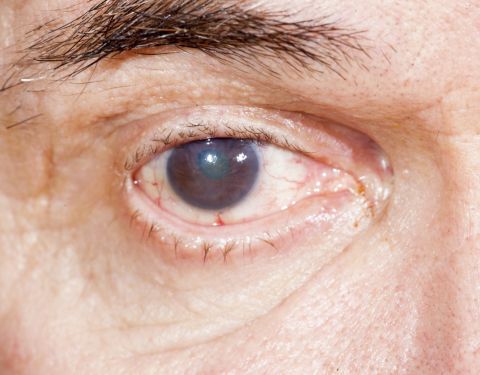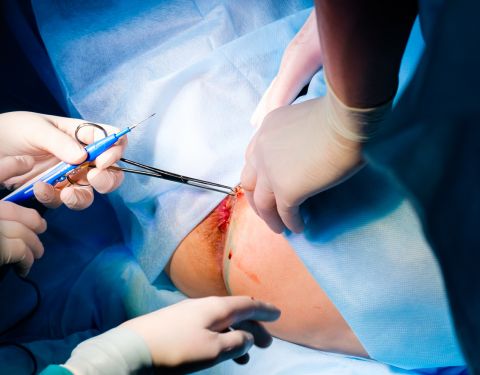This newsletter has been developed under the aegis of the French Society of Plastic Reconstructive and Aesthetic Surgery (FSPRAS) as a supplement to your first consultation, to try to answer all the questions that may arise in case are to be treated for gynecomastia.
The purpose of this document is to provide you with all the information necessary for you to make an informed decision with a full understanding of the situation. Therefore, we advise you to read this information carefully.

Determination of the gynecomastia
Usually, it is idiopathic, i.e. this means that there is no reason for its occurrence; however, in some cases, it may be associated with abnormal hormonal development or taking of certain medications. It is necessary to conduct an examination to eliminate its possible causes. The examination is to determine different well-known hormones by the quantitative analysis, to examine the swelling of the testicles or the pituitary gland. You may need a mammogram or ultrasound to analyze the density of the breast or eliminate breast cancer in men in old age, especially in the case of unilateral form. If the cause is found, it must undergo special treatment. In fact, if etiology is determined, its treatment can achieve a more or less complete regression of gynecomastia.
The increase in breast volume in men, especially in adolescence, is often experienced badly and can cause a lot of psychological problems. This problem in a teenager, especially when he is trying to be a man, can cause low self-esteem, and even a true complexity. Moreover, gynecomastia can be quite painful.
From an anatomical and pathophysiological point of view, there is a normal male breast, but it is of a rudimentary type and is reduced to a simple tubercle on the chest. In some cases, the breast can develop if the hormonal environment contributes to it.
If the cause has not been found, and the patient is concerned about the situation, then surgery may be offered, but only if the patient is in good physical and mental shape. We call this type of operation “gynecomastia treatment”.
What gynecomastia is about
It is most often a bilateral and symmetrical development of the breast located in the center of the areola, stiff and sensitive to palpation. Gynecomastia should be distinguished from adipomastia (excessive deposition of fat in the breast), which occurs much more often, and corresponds to the local fat accumulation. Adipomastia is not centered with respect to the areola, its texture is soft, insensitive, bilateral, and symmetrical, but both can occur simultaneously (adipo-gynecomastia).
Teenagers may have transient gynecomastia, associated with hormonal imbalance towards estrogen, but it disappears in a few months.
Breast cancer has different types. This is a rare form that appears in men, usually after forty. These are unilateral lesions, hard, insensitive associated with deformation or contraction of the nipple, or even bloody secretions.
Principles of surgery
The purpose of corrective surgery is to maximize the recovery of normal anatomy with the principles:
- reduce the volume of the chest by direct surgical exeresis (subcutaneous mastectomy) for the glandular form or via liposuction for the fat forms. In the case of a mixed form, the surgeon must combine both methods.
- reduce excess skin: as a rule, reduction of glandular volume allows tightening of the skin. Liposuction facilitates such tightening of the skin, but it is more clear-cut when we talk about a young man with good skin (firmness and elastic, without stretches). Some postoperative treatments, in particular, massage can help with skin contraction.
In some cases, where there is too much excess skin, the surgeon may reduce it, leaving scars on the skin. This plastic surgery to remove excess skin can be carried out immediately after the first surgery or secondarily.

Before the surgery
The need to study the causes of gynecomastia has been mentioned earlier.
Men who are obese or overweight should keep to a diet should and do exercise, because weight loss can help gynecomastia to regress or even disappear (adipomastia). Depending on the anatomical context, preferences and habits of the surgeon, as well as the desires expressed by the patient, the strategy of the surgery will be developed. The method to be used will also be predetermined, and the location of scars will be marked (see the “Surgery” section).
The general preoperative examination is usually carried out in accordance with the doctor’s prescriptions. The anesthesiologist will advise you no later than 48 hours prior to surgery. Your surgeon and anesthesiologist should be aware of all the medications you are taking, as some of them may not be compatible with anesthesia or lead to bleeding.
Except in special cases, within 10 days before the surgery, no medications containing aspirin or anti-inflammatory drugs are allowed.
It is recommended to stop smoking at least a month before and a month after the surgery (tobacco can cause delayed healing).
Type of anesthesia and hospitalization terms
The type of anesthesia: most often it comes to classical general anesthesia, during which you sleep soundly.
In some cases, the “vigil” anesthesia can be used (deep local anesthesia with intravenous tranquilizers) or even simple local anesthesia (it should be discussed with the surgeon and anesthesiologist).
Terms of hospitalization: the surgery usually requires to stay in the hospital for 1-2 days. Period of stay in the hospital will depend on the surgical method used, as, for example, simple liposuction requires a shorter hospital stay than subcutaneous mastectomy.
Usually, the patient comes to the surgery in the morning or sometimes the day before, in the afternoon. In some cases, the surgery may be performed “ambulatory”, i.e. the patient will be discharged in the day of surgery after a few hours of observation.
Gynecomastia Surgery
Each surgeon uses his/her own method, which he/she uses in each case to achieve the best results. However, you should understand some of the common basic principles.
During a typical surgery, an incision is made along the lower edge of the areola. From this incision, the surgeon may remove the breast (mastectomy subcutaneous) and excess fat. Often, in addition, the surgeon can perform liposuction in the periphery of the glandular excess to achieve the necessary balance.
In the case of gynecomastia with a predominance of fat, exeresis can be performed only through liposuction. Very few scars will remain, which can be located at the level of gynecomastia both under the breasts and on the underarm.
In the case of massive gynecomastia and significant excess skin, the surgeon may need to make the scars longer and, therefore, more visible. These scars can be areolar (around the areola) and horizontal. They can go on either side of the areola. In extreme cases, the surgeon may need to transplant the areola and nipple. There are also other types of scarring (vertical, in the form of a racket handle, etc.). They depend on each individual case.
Depending on the method used and the surgeon’s habits, drainage can be set during the surgery. Drainage is to remove residual blood and lymph, which can accumulate in the operated area.
At the end of the surgery, a “modeling” bandage is applied, often elastic.
The duration of the surgery depends on the surgeon and the method used. It may vary from a few minutes in the case of liposuction and up to two hours for more complex forms, which require a substantial contraction of the skin.
In some cases, you can count on health insurance.
Postoperative period
In the early days, post-operative effects can sometimes be painful. Within a few days, pain therapy will be prescribed with the corresponding degree of pain intensity. In the case of the isolated liposuction patient can sometimes experience pain like “delayed onset muscle soreness”. In the early days after surgery, there may be edema (swelling), ecchymosis (bruising), and discomfort when raising arms.

The first bandage is removed after a few days. It is replaced by a lighter one. The original bandage is often compressed, and then it is a light bandage combined with a restraining vest to be worn around the clock for some time. This restraining vest helps the skin retraction and promotes even scarring.
The total period of suspension of work ranges from five days to three weeks. It is advisable to wait one or two months to go back to sports.
Scars
The scar is an inevitable consequence of the surgery. The objective of the surgeon is to provide a high-quality scar. Scars develop within one to two years after the surgery: in the first month, they are white and thin, and then they turn pink or red and harden up to the fourth month. Then they will gradually fade away. It is important to protect them from the sun during the first year.
The length and location of the scar depend on the technology of the surgery (see the “Surgery” section). Its quality depends on the surgical technique and factors specific to the patient (age, quality and type of skin, etc.).
In any case, the scarring process should be subject to lengthy and hard control.
Result
Improvement is often apparent and urgent, though, it requires 2-3 months to evaluate the final result. This time is necessary in order for postoperative edema to disappear and for excess skin to be removed. During this period, the tissue gradually becomes flexible.
Breast reduction brings physical comfort, especially during dressing. Finally, the result is often good psychologically as gynecomastia often casts a shadow on masculinity.
With regard to the stability of the results, a few cases are possible. For the glandular forms exeresis normally helps to avoid recurrence. However, gaining weight may again be accompanied by an increase in breast volume (adipomastia). This is more characteristic of fat forms.
Disadvantages of the result
From time to time some disadvantages may occur:
- residual volume asymmetry: it can occur due to smaller exeresis smaller on one side compared to the other one, especially if volume asymmetry already existed before the surgery. In some instances, asymmetry may be associated with a more significant postoperative edema on one side, in which case bandage and massage help to correct the defect. If the asymmetry persists a year after the surgery, and it is uncomfortable to the patient, surgical correction can be offered.
- asymmetry of areolas and nipples height: asymmetry is often observed before the surgery, but you just do not pay attention to it and do not notice it. After the surgery, even if the surgeon tried to fix it, asymmetry may persist, and sometimes become “unveiled”, i.e. more visible.
In other instances, asymmetry may be due to the healing of tissue beneath the skin. Daily massages and essential hydration will help to correct the problem.
- capsulization of the areola: it may be associated with too centered glandular exeresis in the back of the areola with no peripheral alignment. If this is a problem, then the surgical “fit” can be offered.
- excess skin: after the surgical correction of gynecomastia often there is excess skin stretching of which may take several months. Contraction is related to skin quality. “Fit” can be desirable.
- areas with depressions or small nodules under the skin: they are associated with liposuction, which in some cases can enhance the “cellulite” appearance. This is normal: daily massage with good hydration will help to crush such fibrous nodules and avoid deep adhesions.
- With regard to scars, the appropriate information has been mentioned earlier.
The sensitivity of nipples usually does not change, but there are cases when the sensitivity is reduced within several months. The lack of sensitivity is an exceptional case. However, if the surgeon has to transplant the peripapillary layer, the nipple may finally lose sensitivity and cause disturbances of the skin color (dyschromia).
Possible complications
Although treatment of gynecomastia is carried out mainly for aesthetic motivations, nevertheless, this is a surgical procedure that carries risks inherent in any other medical interventions, no matter how minimal they are.
The effects of treating gynecomastia are generally simple. However, complications may occur – some general ones, inherent to any surgical intervention, and others – local and typical of the gynecomastia treatment course.
We should distinguish complications related to anesthesia from those associated with the surgery.
As for anesthesia, during consultations, the anesthetist informs the patient about the possible risks of anesthesia. Please, be aware that anesthesia can sometimes cause unpredictable reactions in the body that are curable: the fact of turning to a competent anesthetist practicing in the surgical area means that the risks are statistically very low.
It is also necessary to know that methods and drugs used for anesthesia and monitoring methods have greatly improved for the last thirty years, ensuring optimal safety, especially when the surgery is performed not by ambulance to a healthy person.
With regard to the surgery, when choosing a competent and qualified plastic surgeon who specializes in this type of operation, you minimize these risks as much as possible but do not eliminate them completely. Contact us for help in choosing a good surgeon in France.
In practice, the vast majority of well-prepared and performed gynecomastia treatment surgeries bring no problems. Postoperative consequences are uncomplicated and patients are completely satisfied with their results. However, despite that, complications can sometimes occur:
- postoperative bleeding and hematoma: bleeding can occur within a few hours after the surgery. If it is abundant, it may be accompanied by swelling and painful tension (hematoma). It can be eliminated.
- Phlebitis and pulmonary embolism: resumption of walking in the early stages allows to minimize this risk.
- Serous effusion: sometimes accumulation of lymphatic fluid is observed in the mastectomy. We can also talk about lymphocele or seroma. One or multiple punctures may be required to evacuate this fluid.
- Postoperative infection: it can occur in the first days after the surgery, and be accompanied by high fever, sometimes above 39 °C. In this case, the operated area becomes swollen, red and painful. Antibiotic therapy may be sufficient, but surgical drainage is often required.
- Skin necrosis: skin needs proper vascular supply (oxygen supply). If the blood supply is inadequate or of poor quality (high tension, hematoma, infection, smoking, etc.), skin necrosis may occur. It can be cured with the help of medical care and the necessary bandage. Scarring will start, but with some delay.
- pneumothorax: a very rare case and will require special treatment.
- Abnormalities of scarring: the surgeon does everything possible to make beautiful seams. However, scars, being risky, are sometimes not as invisible as we would like them to be. In the same person, depending on the body area, the scarring process may be different. Thus, scarring can be adverse with the development of unforeseen hypertrophic or keloid scars, which can spoil the aesthetic result and require specific local treatment, often long.
- Inadequate sensitivity of the skin: in the first months after the surgery, you can observe inadequate skin sensitivity. Then it begins to fade before returning to normal. It is a rare case, but sometimes the discomfort of excessive sensitivity may occur. These cases require special treatment. As we saw earlier, if the surgeon is to transplant the peripapillary layer, the nipple may finally lose sensitivity.
In general, do not overestimate the risks, while just realize that surgery, even seemingly simple, always contains even a small danger. Turning to a qualified plastic surgeon will help you to make sure that he/she is well educated and has proper skills to avoid these complications, or, if necessary, treat them effectively.
Personal notes
This is the basic information we would like to offer you in addition to the consultation. We recommend that you save the document, read it after the consultation and think about it with a clear head.
Perhaps, after some deliberation, you will have any questions that we can answer. We remain at your disposal for further discussion at the next consultation, or on the phone, even on the day of the surgery, when we meet again with you, in any case, before anesthesia.


















